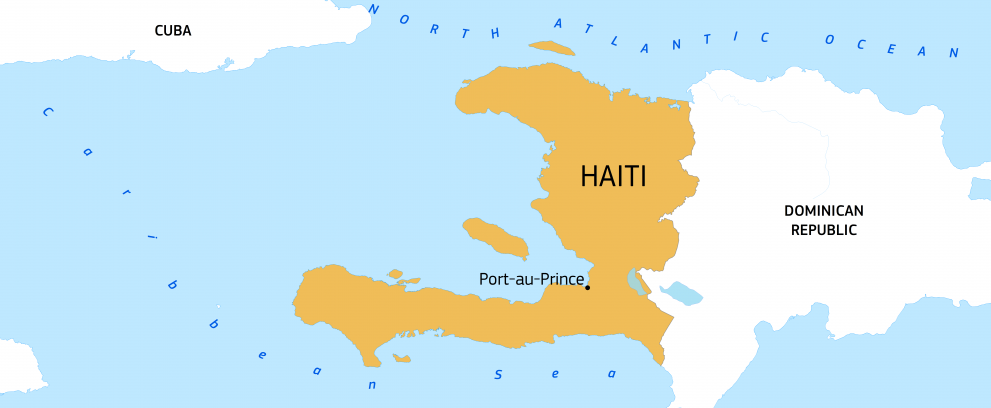Introduction
Haiti is a chronically fragile state, highly vulnerable to natural hazards and human-induced disasters. The country is presently facing an acute security crisis due to soaring gang violence, amidst deep socio-political instability and economic turmoil.
Gang-related violence has reached unprecedented levels: 85% of the capital Port-Au-Prince is under control of armed groups, affecting the lives of almost 1.5 million people.
What are the needs?
Haiti has been grappling with a food crisis for the past 5 years. Recurrent gang attacks in the metropolitan area of Port-au-Prince and in other departments of the country have created a hostage-like situation for the population, severely hampering access to basic services such as food, drinking water and health.
Some 5.4 million people (nearly 50% of the population) are currently facing acute food insecurity; of them, 2 million are in immediate need of help and 6,000 are facing catastrophic levels of food insecurity. About 277,000 children aged 6-59 months, pregnant and nursing women are at risk of acute malnutrition, including over 125,000 severe cases.
Over 1 million people had to leave their homes to survive, often more than once, becoming internally displaced. While more and more people are fleeing the capital to reach provincial towns, those remaining in the capital are sheltered in host communities and makeshift sites and remain exposed to significant threats, with a severe incidence of sexual violence, exploitation and abuses.
The extreme levels of violence have also made it challenging for children to access education. Many schools have closed and many of them are increasingly used as shelters for internally displaced people. At the same time recruitment of children into armed gangs increased by 70% in 2024, it is estimated that in 2024, 50% of gang members were minors.
At least 60% of the country’s health facilities have stopped functioning or operate below their normal capacity, with only one public hospital still open in the capital Port-au-Prince. The number of cholera suspected cases has decreased throughout the country, however localised outbreaks are still recorded. The airport in Port-au-Prince has been non-functional since November 2024.
In 2024, near 200,000 Haitian migrants were deported mainly from Dominican Republic, and more than 44,000 were deported since the beginning of 2025 only. The complex situation has forced many Haitians to leave their country. From January to November 2024, around 12,000 Haitians crossed the dangerous jungle between Panama and Colombia (known as the Darien gap).

How are we helping?
With €510 million allocated since 1994, Haiti is the main recipient of EU humanitarian aid in Latin America and the Caribbean.
In 2024, the EU has allocated €35.9 million to address the needs of the most vulnerable population. Among the different areas of intervention, the funding aims to:
- address the survival needs of people affected by the recent increase in political and gang-related violence, including forcibly displaced people,
- strengthen the capacity of communities to respond to disasters,
- help provide children with access to quality education in a safe environment,
- support the emergency response to the cholera epidemic currently affecting Haiti,
- improve coordination and security management for the humanitarian community.
In April and May 2024, the EU activated two EU Humanitarian Air Bridge operations shipping 107 tonnes of relief items from Panama to Cap-Haïtien.
Since 1998, the EU has invested around €38 million in its disaster preparedness programme, aiming to put in place early warning systems and rapid response capacities.
This funding aims to strengthen the emergency response through strategic partners working closely with national response bodies against recurring natural hazards. Improving the resilience of the most vulnerable communities to natural and epidemic risks remains a priority.
A Memorandum of Understanding on disaster risk management (version in Spanish) has been established as a new collaboration instrument between the European Union and the Latin America and Caribbean region. This agreement focuses on disaster preparedness and risk management, and it became effective in May 2024. Regional disaster management agencies, including the Caribbean Disaster Emergency Management Agency (CDEMA), have signed as parties to the agreement.
Last updated: 18/03/2025
Facts & figures
6 million people in need of humanitarian aid
5.4 million people are estimated to be acutely food insecure
1 million people internally displaced
277,000 children aged 6-59 months, pregnant and nursing women are at risk of acute malnutrition
EU humanitarian funding: €35.9 million in 2024

